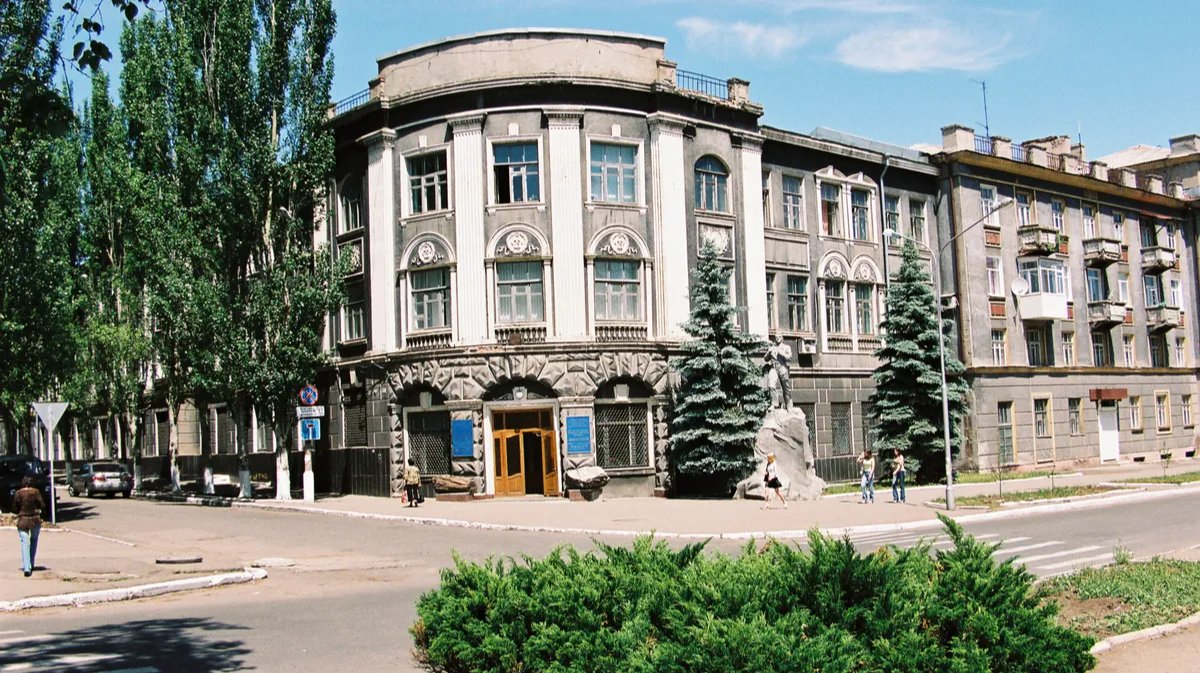This article was originally published on the website of Novaya Gazeta. We thank our colleagues for the opportunity to publish its translation with minor cuts.
“The participants of the competition ‘Thank you, granddad, for the Victory’ thanked the organisers for the opportunity to share their grandfathers and great grandfathers’ heroic deeds. Over 1,000 people participated by sending in drawings, photos, and essays. Children shared family stories told to them by their parents. [The parents], in turn, learned about these things from their elders. And the pride 10-year-old boys and girls feel for their great granddads that they had expressed in their drawings and essays made everyone feel respect towards family history.”
This is an excerpt from a news article about celebrating the Victory Day in Bakhmut in 2016. The photos show school students. They are being awarded with cakes and other prizes for their art inspired by the Victory.
And here is the message from Bakhmut’s city head Oleksiy Reva for the 2021 Victory Day:
“Dear residents of the city! With all my heart, I congratulate you with the Day of Remembrance and Reconciliation and the 76th anniversary of Victory over Nazism in the Second World War. These days, we remember and pay our respect to those who fought the enemy at the front and in the rear, in partisan units. Dear veterans, you defended the world from the invaders during the Second World War. During those terrible years, you defended Ukraine and gave your youth to make ours peaceful and happy.”
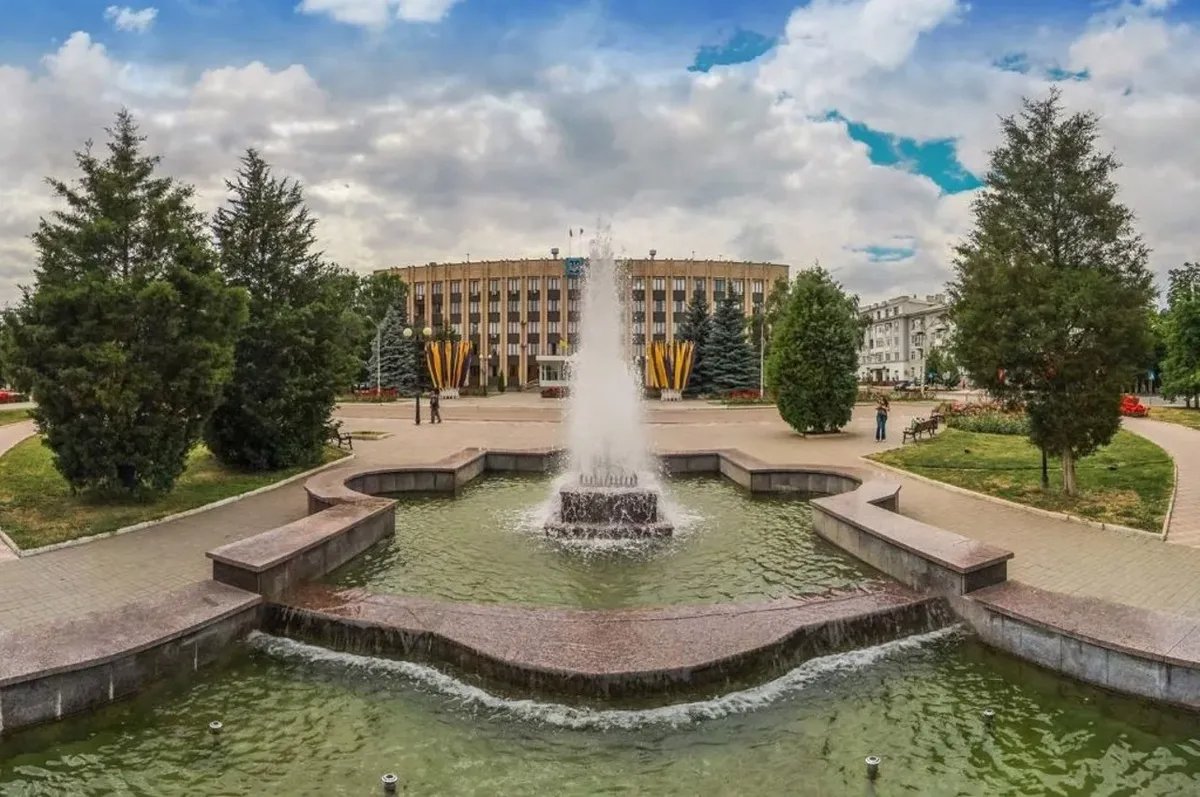
A square in Artemivsk
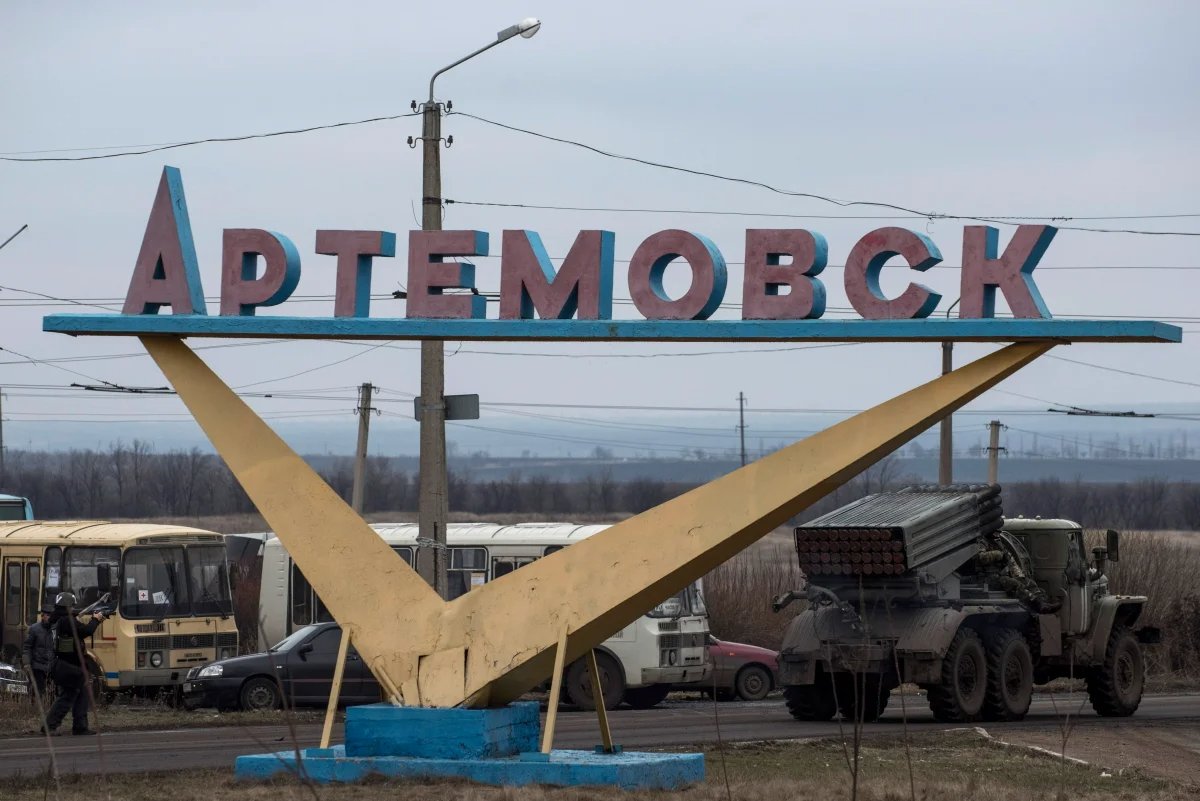
Artemivsk, 2018. Photo: Alexey Maloletka / AP / TASS
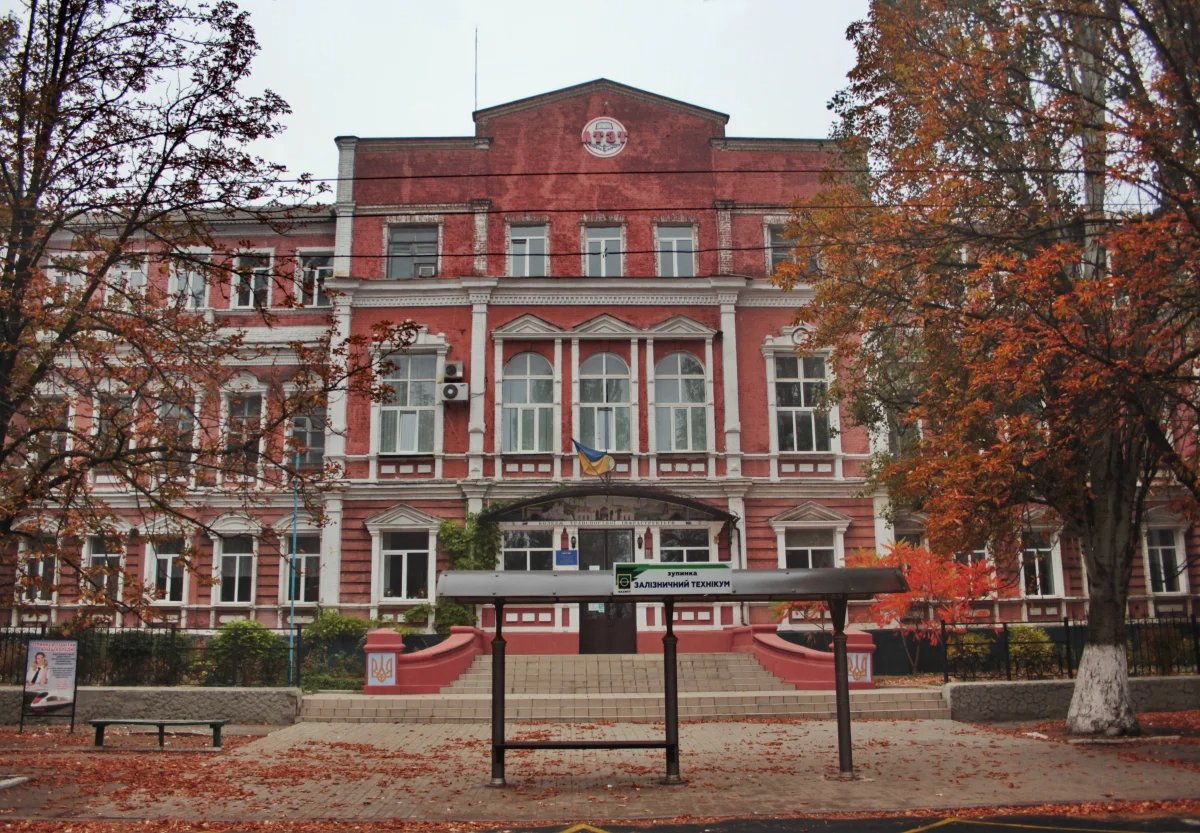
Artemivsk’s Transport Infrastructure College. Photo: Wikimedia
During the Great Patriotic War, Artemivsk (Bakhmut’s name during the Soviet reign) was occupied by German Nazis for one year and ten months.
Every year during 9 May, and more recently 8 May, people in Bakhmut laid flowers at the monuments dedicated to the Victory. They sang songs, performed at street concerts, and thanked veterans. 2022 marked the first time this day was not celebrated.
Growing and headstrong
A fair is being held in the city park among tall trees — souvenirs, cotton candy, and street painters’ art are being sold. Everywhere, people are singing and dancing. The place is crowded.
There’s an exhibition at the park exit, near the fountain — fire-fighting and medical vehicles are on display. People take photos near them or get inside.
The date is 11 September 2021. It’s City Day. Bakhmut is turning 450. It was founded in 1571 — as a fortress and centre of salt-making (the biggest salt deposits in Europe were located nearby). It received the city status two centuries later.
Bakhmut has never been a grey, impersonal, or depressing city — actually, in 1920 it even became the centre of the Donetsk province. Not for long — just for five years, until Donetsk took on this mantle. But still.
Until 2022, even factories here were far from boring — the Artemivsk Sparkling Wine Company produced up to 25 million bottles per year. Its sparkling wine received countless awards and was exported to two dozen countries across the world, including Germany, Luxembourg, Canada, Israel, and Thailand. And of course, Russia.
In reality, people in Bakhmut had a warm attitude towards Russia, and no one was discouraged from having it. Head of the city Oleksiy Reva was a member of the Party of the Regions (a pro-Russian political party that ousted Ukrainian President Viktor Yanukovych belonged to — translator’s note), while the majority of seats in the City Parliament were filled not with pro-Western deputies but with representatives of pro-Russian political parties.
Despite Bakhmut’s loyalty to the eastern neighbour, it was not considered an outcast. New buildings were being built, tourist infrastructure was being developed, money was allocated for the renovation works, and production was expanding. In 2019, the residents were polled on what improvements they would like to see in the city. There were 20 options to choose from, including public transport renovation, expansion of the recycling programme, environment and city improvements. The residents said that they would like to see new factories opened and new jobs created.
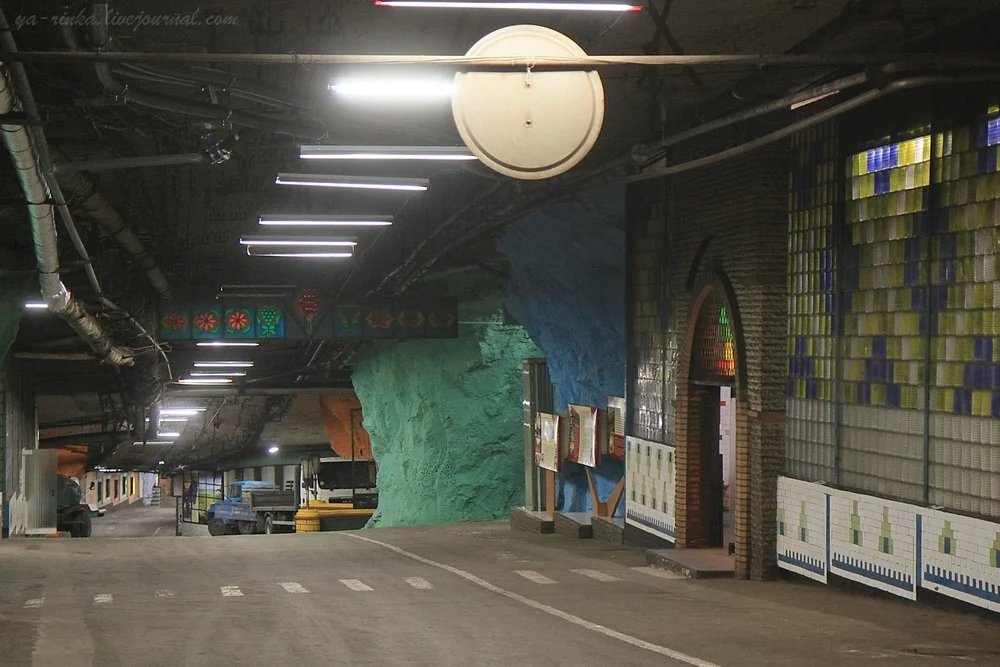
The Artemivsk Sparkling Wine Company. Photo: ya-rinka / LJ
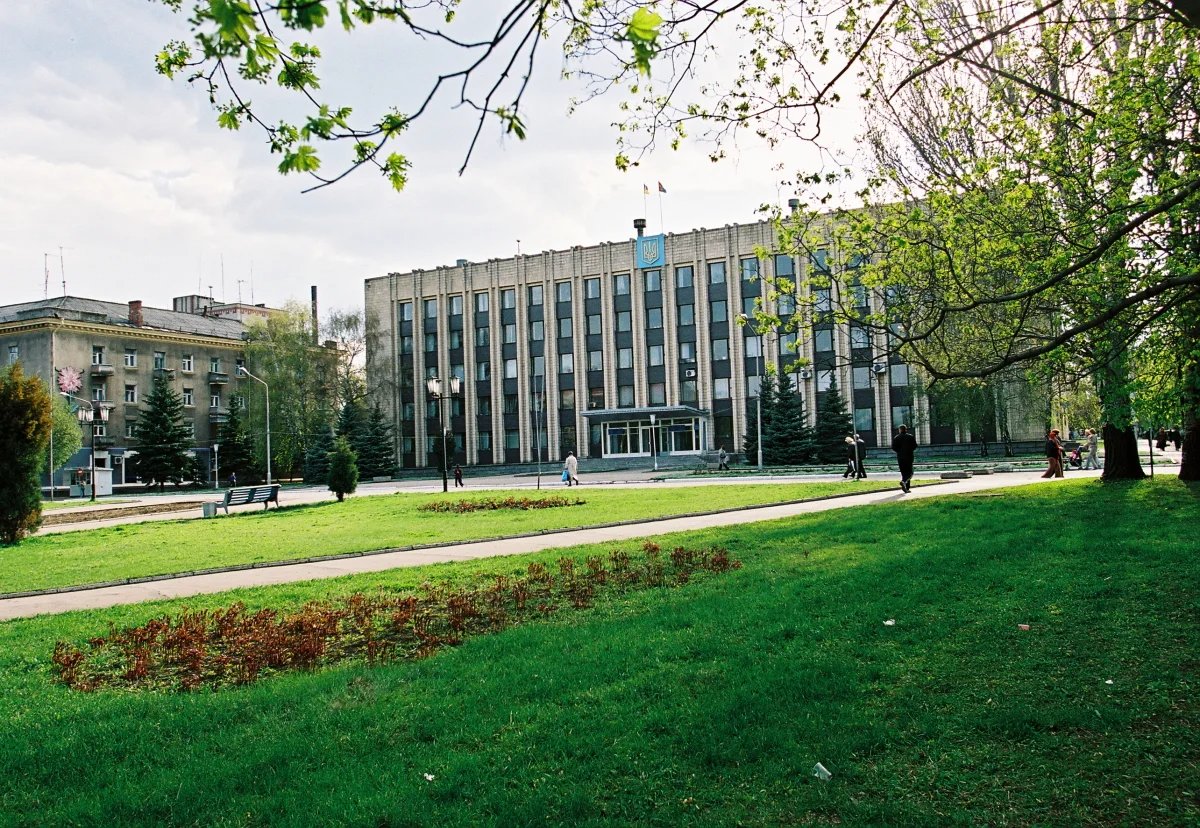
The Artemivsk City Administration. Photo: Anastasia Fedorenko
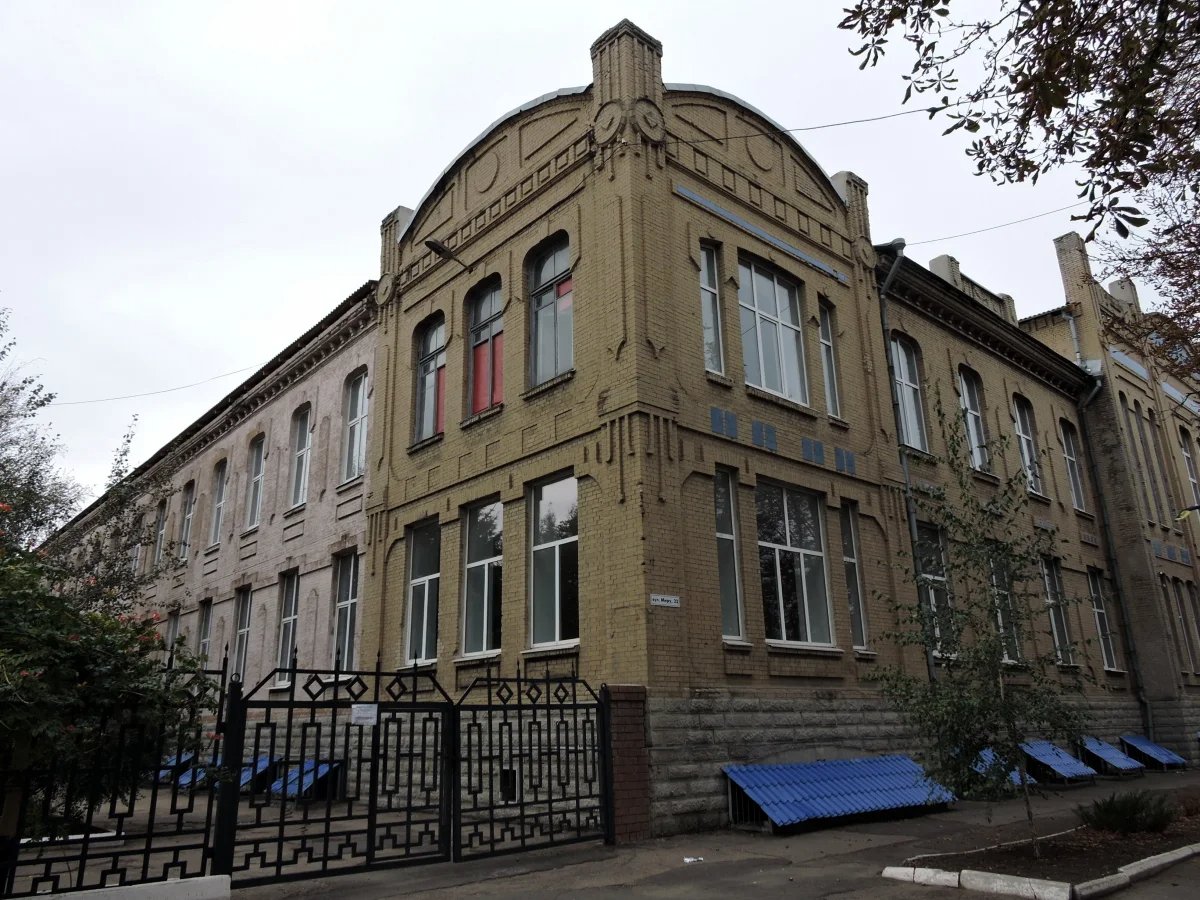
One of Bakhmut’s schools. Photo: Wikimedia
One can’t say that Bakhmut did not have its own issues. The salaries here were lower than the national average. By the way, despite the majority of the city population being Ukrainians, less than half of them spoke their native language; people in Bakhmut mainly spoke Russian. And although Russian didn’t have the official language status, it was the language used to teach in the city’s schools.
In 2014, after Euromaidan, a parliamentary election was held in the city, with 59% of votes going to the parties that opposed the new Ukrainian government. Although the voter turn-out was very low — just 29.6%.
What’s in a name?
Still, Bakhmut wasn’t keen on living in the Soviet paradigm which was starting to overtake Russia in the 2010s. When a monument to Russian politician Fedor Sergeyev (also known as Comrade Artyom, in whose honour the city was renamed to Artemivsk in 1924) was dismantled in the city in 2015, there were no mass protests about it.
There was more of a debate about the city being renamed — until 2015, it still carried the Soviet name Artemivsk. The first attempt to return the historical name had been carried out not long before Ukraine gained independence in 1991. But back then, only 25% of the city population voted for going back to the name Bakhmut.
The issue was raised again after the start of the conflict in eastern Ukraine in 2014. The troops of the self-proclaimed Donetsk “people’s republic” entered the city at the very beginning of the conflict, in April. But Artemivsk did not stay under the control of the unrecognised republic for long — three months later, the separatists left the city under pressure from the Ukrainian army.
A year later, during a shelling conducted from the east, dozens of residential buildings were destroyed and several civilians were killed. In pursuance of the Ukrainian decree on decommunisation, the monument to Comrade Artyom was dismantled and later the city was given its historical name of Bakhmut back. It is of note that Russian state media covered it precisely like that: “Artemivsk City in Donbas given its historical name Bakhmut back” was a headline on the website of RIA Novosti, Russia’s state news agency. However, nowadays Russian state media and Ministry of Defence pointedly refer to the city by its Soviet name, Artemivsk (or the Russian spelling of it, Artemovsk).
The opinion of the residents on the subject, according to countless polls conducted by the media in 2015, was about fifty-fifty. There was neither a referendum on the subject nor mass protests being held.
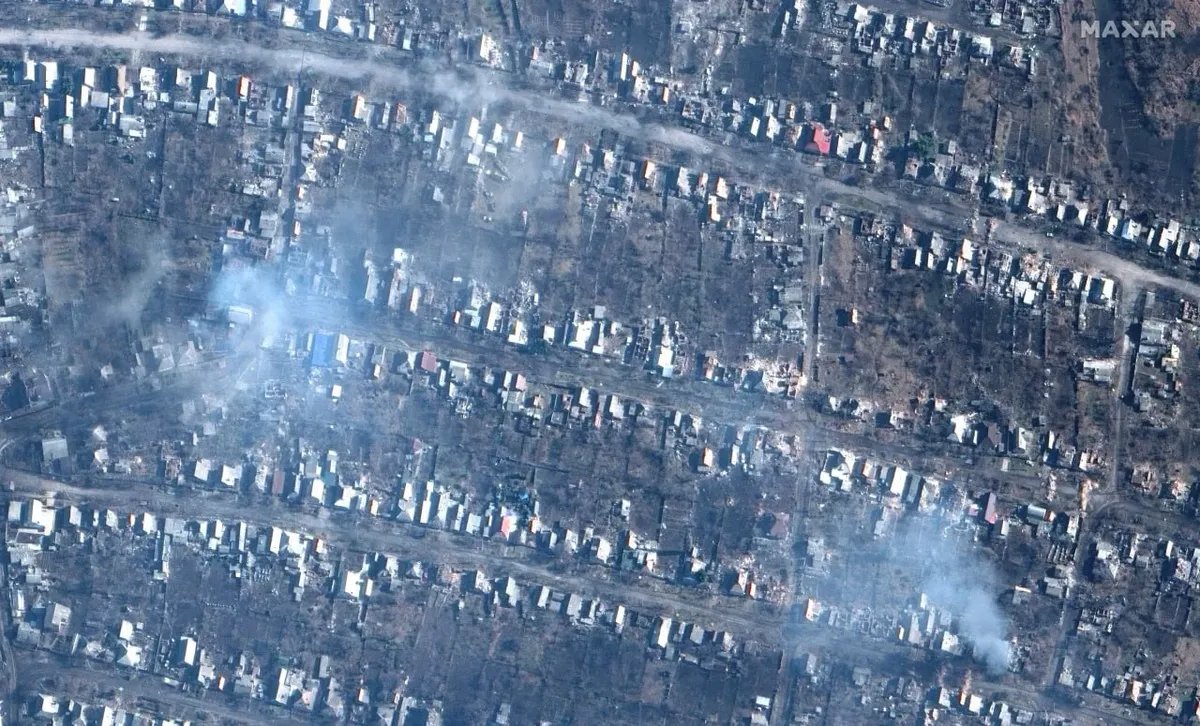
Bakhmut. Image captured by MAXAR company and posted on Telegram channel of Russian war correspondent Kotenok Z
P.S.
Life in Bakhmut was not perfect, neither was the local government system. But still, it was a life. In recent years, an embankment and one of the city squares were reconstructed. The stadium where the Ukrainian paralympic team trained was located in Bakhmut. And there was an alley with 6,500 roses…
In February 2023, Russia’s state media shared quadcopter footage — the 40-second video showed ruins of residential buildings, with no window left unshattered.
Join us in rebuilding Novaya Gazeta Europe
The Russian government has banned independent media. We were forced to leave our country in order to keep doing our job, telling our readers about what is going on Russia, Ukraine and Europe.
We will continue fighting against warfare and dictatorship. We believe that freedom of speech is the most efficient antidote against tyranny. Support us financially to help us fight for peace and freedom.
By clicking the Support button, you agree to the processing of your personal data.
To cancel a regular donation, please write to [email protected]
